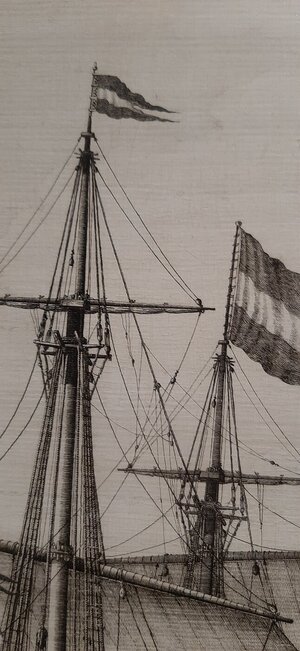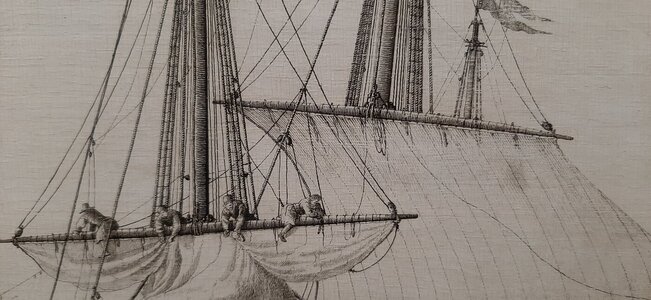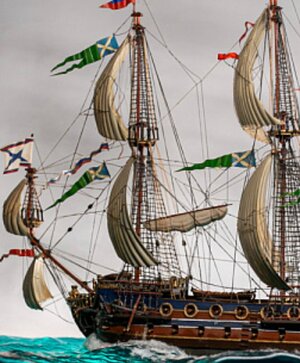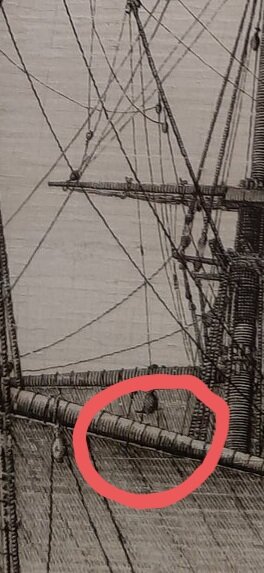I think I remember these from Scouts. Left over right and right over left.Yes, Captain Sparrow. I have been calling them reef knots (but they're just square knots). They're a bit fiddly at first but you get good at them over time (like everything on these ships).
View attachment 315431
You are using an out of date browser. It may not display this or other websites correctly.
You should upgrade or use an alternative browser.
You should upgrade or use an alternative browser.
Vasa - 1:65 DeAgostini [COMPLETED BUILD]
- Thread starter dockattner
- Start date
- Watchers 145
- Joined
- Aug 8, 2019
- Messages
- 4,099
- Points
- 688

These picture have a lot of information. I like them.I have digged into my Van de Velde pictures
- Joined
- Aug 8, 2019
- Messages
- 4,099
- Points
- 688

Interresting details is the leechlines, the blocks are attached to the rope of the lift on the yard.
These grisailles are so extremely detailed and Van de Velde being a son of an inland water way sailing family was very well informed about all these tiny details.Interresting details is the leechlines, the blocks are attached to the rope of the lift on the yard.
I didn't notice the leech line blocks but indeed very well noted and interesting detail.
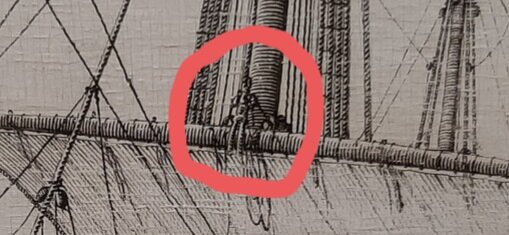
Just to avoid anyone getting confused, the line which those leech blocks are attached to that hauls up the yardarm is not a lift line, it’s a tie. The lift lines support the outer ends of the yard, and go from there to blocks tied to either below the top or on the masthead, depending on the ship’s nationality, then run down to the deck to belaying points.These grisailles are so extremely detailed and Van de Velde being a son of an inland water way sailing family was very well informed about all these tiny details.
I didn't notice the leech line blocks but indeed very well noted and interesting detail.
View attachment 315540
Lost in translation 
Your Dutch will always be 1,000 times better than mine, Maarten!Lost in translation
What I noted was one gasket per 2 or 3 sail clothes...Hi Paul,
Great work again as always and very informative discussion.
I have digged into my Van de Velde pictures for the robands and found this detailed one showing around 3 robands per sail cloth.
View attachment 315526
About the seaman in the yards definately no foot ropes, and this is half way the 17th century.
View attachment 315527
I thought the two ties went over the cap and didn’t meet till the triple block of the halyard. This looks like the ties join to a single line and must go through a sheave in the mast.
Oooh! You're getting smart Vic! There are two ties on the yards for the course sails only (main sail and fore sail). While you are correct that most Dutch built ships ran those ties over the mast cap, on the Vasa they run through sheaves mounted on the side of the mast below the trees.I thought the two ties went over the cap and didn’t meet till the triple block of the halyard. This looks like the ties join to a single line and must go through a sheave in the mast.
On the topmasts and top gallants there is a single tie, and it passes through a sheave in the mast.
- Joined
- Aug 8, 2019
- Messages
- 4,099
- Points
- 688

These are indeed topsails. Lowered to the topI thought the two ties went over the cap and didn’t meet till the triple block of the halyard. This looks like the ties join to a single line and must go through a sheave in the mast.
- Joined
- Aug 8, 2019
- Messages
- 4,099
- Points
- 688

I'm not in keeping the names, more practical how it attached and details
We have to learn the names in order to communicate questions and answers, and you slowly learn them as you do rigging.I'm not in keeping the names, more practical how it attached and details
- Joined
- Aug 8, 2019
- Messages
- 4,099
- Points
- 688

I can tell you, learning the English names is easy. The Dutch names are a pain in the assWe have to learn the names in order to communicate questions and answers, and you slowly learn them as you do rigging.
- Joined
- Sep 3, 2021
- Messages
- 4,228
- Points
- 688

Not one word French in there...The Dutch names are a pain in the ass



